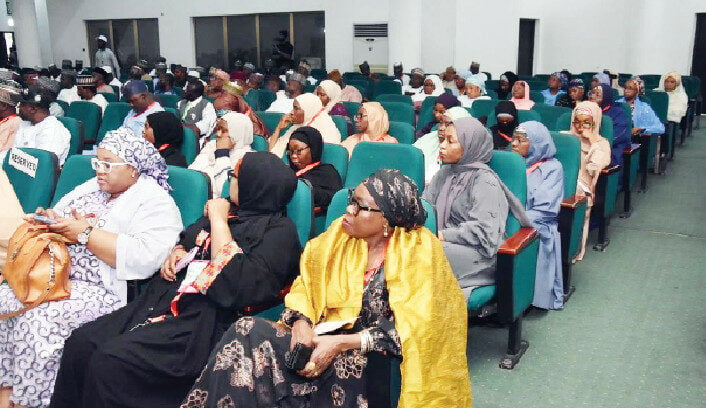The Imperative of Pilgrim Education
Pilgrim education stands as an essential pillar of the Hajj process, perhaps even more vital than any single logistical detail. The very point of the journey is to perform the pilgrimage with understanding, reverence, and competence. When the rite is performed without clarity or confidence, the broader aim of Hajj can seem diminished. Therefore, the education of pilgrims—by industry players who receive the pilgrims’ trust and payment—must be robust, proactive, and unwavering.
Embracing Digital Aids for Rites Mastery
Education should not be constrained to static models alone. It is time to embrace digital aids that can illuminate the rites with immediacy and immersion. A Pilgrim Education Programme enhanced with augmented reality (AR) and virtual reality (VR) can deliver pre-departure training that simulates the rites and introduces pilgrims to the sacred sites in an interactive, memorable way. By partnering with technology providers or developing in-house VR modules, accessible on smartphones and VR headsets, we can ensure broad reach and inclusivity. This approach enhances comprehension of the rites, reduces on-site confusion, and facilitates smoother operations during Hajj.
Additionally, the in-flight content of our air carriers should incorporate instructions on performing Hajj in our local languages. This will refresh the pilgrims’ memories of whatever they would have been taught about the ritual before their arrival in the Kingdom of Saudi Arabia.
The Challenge and Nuance of Pilgrim Feeding
Pilgrims’ feeding is a delicate area, drawing sustained interest from a broad spectrum of stakeholders eager to secure the contract. This interest group includes influential individuals, consorts of state chief executives, and even superintendents of certain Islamic organisations. The concern lies not in the mercantile impulse itself but in the execution of the deal and, crucially, what the pilgrim ultimately receives. The process involves a labyrinth of approvals—from shortlisting of qualified catering companies, to the desk ratifying the contract sum per meal, to the agents of the Saudi feeding company, and the kitchen preparing the meals at each intermediate stop. At every juncture, the quality and quantity of food shrink, so that by the time it reaches the pilgrim—the real beneficiary—it is deprived of acceptable human standards, protein, and nutritional value. This is not what the pilgrims paid for. The same feeding framework is adopted by other countries whose pilgrims pay no more than the Nigerians; yet, in practice, the outcomes are not comparable to those experienced by Nigerian pilgrims. If corruption proves intractable, then let Nigerian pilgrims have their meals in their hotels. We can begin with Madinah, where pilgrims reside in the Markaziyyah area, typically in standard hotel settings. Each facility within Markaziyyah has a restaurant capacity proportionate to the size and number of rooms in the building. The contract terms should be on a half-board basis—bed, breakfast, and dinner. Meal periods at hotels are typically extended to around four hours. Breakfast runs from 6:00 am to 10:00 am, and dinner from 6:30 pm to 11:00 pm. With this time window for each meal, pilgrims could be classified and scheduled according to floor level. For example, a hotel with twelve floors could assign breakfast for floors 1–3 between 6:00 am and 7:00 am; floors 4–7 between 8:00 am and 9:00 am; and so forth. Through this arrangement, our pilgrims would receive meals in a more hygienic, fresh, hot, and timely manner. From Madinah, this hotel-based feeding arrangement could be replicated in Makkah.
This will not prove easy, for all the pressing interests that sit at the table of feeding contracts will ensure the remedy falters. They will advance every plausible objection to its feasibility. They will not do so to safeguard the pilgrim, but to preserve the status quo ante for the sustenance of their mercantile interests.
Madinah to Makkah Transport: A Critical Artery
Madinah to Makkah transport forms a vital artery in the Hajj journey, a corridor whose current rhythm is defined by long, exhausting bus passages spanning nine to twelve hours, traversing generations and abilities alike, and weighing heavily on those with disabilities. A faster, safer, and more comfortable alternative promises to transform this leg of the pilgrimage.
Haramain High-Speed Railway: A Transformative Option
The Haramain High-Speed Railway presents a compelling option to elevate comfort, safety, and efficiency for our pilgrims. If the Saudi side can expand frequency to accommodate more passengers, this corridor could become a model of reduced fatigue and logistical complexity, delivering travel times of under three hours between Madinah and Makkah. Such a prospect sits squarely within our commitments to dignity, accessibility, and predictable scheduling.
Timing, Occupancy, and Integration
Timing and occupancy demand careful attention: Nigerian pilgrims typically arrive in Madinah and depart from there during Zul Qi’dah. If the train remains underutilised in Zul Qi’dah, that window could be harnessed for early bookings and smoother transitions. Integration with the Masaar Portal would be transformative, embedding the train option within the Masaar ecosystem to enable pilgrims to enjoy high-quality transportation in a single, streamlined process.
Service Provider Selection
Hajj operators are not permitted to select their service providers. If the primary concern is the pilgrim’s well-being, then the emphasis should be on ensuring the capability of the service providers in that regard. Yet it is stupefying to observe a regulatory agency insisting on a particular service provider for no discernible reason. In some instances, as with private Hajj operators, the objective posts are shifted mid-game. For example, the Commission initially approved the choice of a service provider, even ratified the contract, only to rescind its decision and compel another for the Hajj operators, even at a higher cost than the former.
Masters of the Game
Service providers know what they want and how to achieve it. Nigeria is blessed with a handsome number of pilgrims, which attracts Hajj business entities to come, all but determined to secure the contracts by every means available. They are familiar with the system and with our Achilles’ heel. They know what bait to dangle to catch the fish and achieve their aims.
Focus on Quality and Preparedness
Yet the emphasis should be on who can provide the best service to our pilgrims at the right price, particularly in the Mashaa’ir. Let us assess the level of preparedness among the companies vying for attention. What is the location in Minaa? What is the quality of bedding, the thickness of the mattress, and the space between mattresses? What is the ratio of public conveniences to the number of pilgrims? What is the nature of the meals? Have arrangements been made to accommodate Nigerian cuisine for our pilgrims? When we establish all these with our pilgrims in mind and negotiate the best rates for the services, we approach NAHCON as the regulator, not as an operator, for its ascent and ratification. In such a situation, we are accountable for whatever transpires and are prepared to bear responsibility accordingly.






